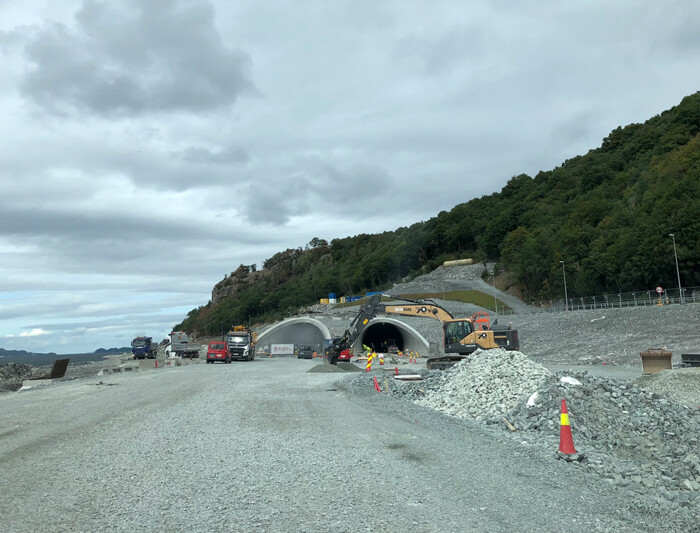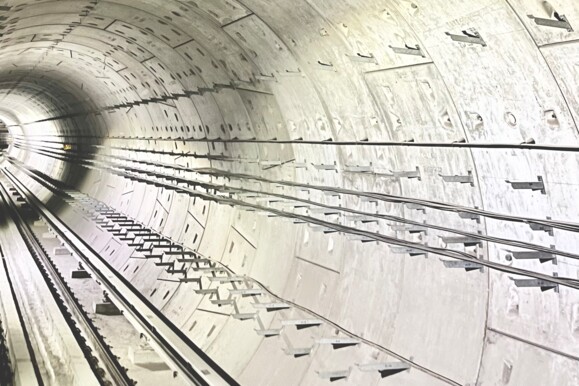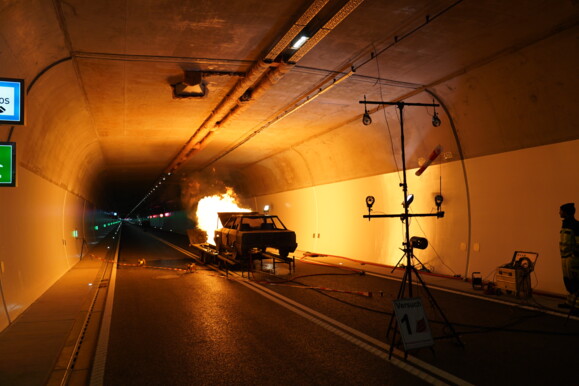Project Overview
The Ryfast tunnel system in Norway is the world’s longest subsea road tunnel network, stretching nearly 14 km beneath the fjords. It consists of the Ryfylke Tunnel, the Eiganes Tunnel, and the Hundvåg Tunnel, together forming a critical traffic connection between Stavanger and surrounding regions.
Like all major road tunnels, Ryfast faces the inherent risk of fire incidents that can quickly escalate, threatening lives, infrastructure, and operational continuity. Fires in tunnels reach extreme temperatures, produce large volumes of smoke, and are difficult to access for firefighting teams. Norway has prioritized tunnel safety since 2016, making the installation of advanced fire detection technology a core requirement for new infrastructure projects.
To address these challenges, AP Sensing’s fiber optic Linear Heat Detection (LHD) technology was chosen for comprehensive fire detection and monitoring across the entire tunnel network.
Challenges
Many tunnels in Norway have historically relied on limited or even manual fire alarm systems, which are insufficient for high-traffic or subsea tunnels. In the event of a fire, temperatures can quickly reach 800–1000 °C, endangering human lives and severely damaging infrastructure. Beyond immediate risks, tunnel fires can force long closures, create traffic congestion, and erode public confidence in the safety of critical infrastructure. Because Ryfast is part of Norway’s major road infrastructure and subject to the EU’s tunnel safety regulations, a reliable and advanced fire detection solution was essential to ensure longterm safety and operational continuity.
Solution
AP Sensing first started equipping the Ryfast tunnel system in 2018, providing a state-of-the-art fiber optic Linear Heat Detection (LHD) solution
as part of Norway’s national tunnel safety initiative. In the Ryfylke Tunnel, four N4387B
devices were installed, the Eiganes Tunnel is equipped with two N4387B
devices, and the Hundvåg Tunnel with three N4387B
devices. Each device operates with two or four channels and a measurement range of up to 6 km.
Sensor cable lengths between 3 km and 6 km ensure full coverage of both tunnel tubes, with full redundancy safeguarding continuous operation even in the event of a fiber break. The system interfaces directly with the tunnel’s control system via Modbus TCP. AP Sensing’s SmartVision software
is installed, storing trace data from all three tunnels for 20 days.
In 2025 the installation was reviewed and upgraded to the latest requirements. AP Sensing provided technical support during every step of the process, ensuring the installation now operates at a state-of-the-art technical condition and customer needs.
Results
The AP Sensing solution provides reliable and early fire detection across the Ryfast tunnel system, ensuring that even minor temperature increases are quickly identified.
Operators benefit from uninterrupted monitoring through the fully redundant setup, which guarantees continuous operation under all circumstances.
SmartVision
is used to store trace data and manage alarms, giving operators actionable insights during emergencies. The Linear Heat Detection technology
precisely localizes fire incidents, informs intervention forces about fire spread and direction, and can even detect multiple burning vehicles simultaneously. A full visualization of the tunnel system could be implemented at any time in the future, should the customer choose to expand SmartVision
.
Together, these capabilities enable fast responses that protect lives, vehicles, and infrastructure while minimizing operational disruptions.
Conclusion
The Ryfast project demonstrates how AP Sensing sets new benchmarks in tunnel fire safety. By combining robust fiber optic LHD hardware with SmartVision , AP Sensing delivers a solution that not only meets today’s stringent safety requirements but can also be upgraded and expanded to support future standards. This future-proof approach reinforces AP Sensing’s position as a trusted partner in protecting critical infrastructure and safeguarding the traveling public.




